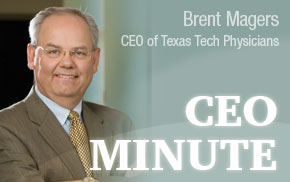 I like coffee. Maybe not as much as a certain individual who works here that is known
for his ubiquitous cup (hint — his initials are John Berry). But, I am in the upper decile of coffee drinkers.
Starbucks coffee is my favorite.
I like coffee. Maybe not as much as a certain individual who works here that is known
for his ubiquitous cup (hint — his initials are John Berry). But, I am in the upper decile of coffee drinkers.
Starbucks coffee is my favorite.At first, I rebelled. $2.11 for a “grande.” I even refused to use terms like tall, grande,and venti. We don’t talk that way in Texas. It’s a bit pretentious for my taste. Now, I am trained by Starbucks to say, “May I have a grande Pike please, with no room for cream?” I (mostly) gladly shell out the $2.11. Except now, I do not have to actually exchange old-fashioned money; I have a Gold Card from Starbucks with my name on it. That’s right!Stop by my office and I will show it to you. (My wife has one-upped me — she just swipes her iPhone in some manner and gets her coffee.)
Starbucks must employ marketing geniuses. Almost every other day, I get an email — or even a text message — to come in to get a special deal on something. Moreover, once I buy 15 cups (for a total of $31.65) I get a free cup of coffee that probably costs Starbucks about 18 cents to brew.
Anyway, what does coffee drinking have to do with anything? Well, I am reading a book called “The Creative Destruction of Medicine” by Eric Topol, M.D. Topal is a world-renowned cardiologist, formerly employed by the Cleveland Clinic and now with Scripps Research Institute. The term “creative destruction” comes from the field of economics — it is considered by many economists to be the driving force behind economic growth and rising living standards. Basically, we are talking about the transformative effects of creative destruction to create new products and services. The destruction is doing away with old ways. Starbucks did it. They took something as mundane as drinking a cup of coffee, destructed how most of us did it and what we paid, and made it into an event! A ceremony! A must have!
What does Texas Tech Physicians of Lubbock need to creatively destruct? How about the way we schedule patient appointments? When I am not drinking coffee, I think about Southwest Airlines and how we now print our boarding passes at home and walk right up to board the plane. (Except we have to go through TSA — but that is another column). Some younger readers will find this hard to believe, but at one time we had to carry a ticket of about 10 sheets of one-third-page-size paper all stapled together to the check-in desk. The desk attendant would then issue us a boarding pass after she or he pulled one or two sheets from our bundle and then handed it back to us to keep up with.
So how can we use creative destruction to change how we schedule appointments? How about requesting and receiving an appointment to see a provider at Texas Tech Physicians of Lubbock from your home via a secure portal? It could be a process where you could complete most of the paperwork online, including a history (updating what is already in the EHR if you’re an existing patient) and be given a number. Maybe you could even watch a brief video related to the reason for your visit. When arriving at the clinic, you could walk up to a kiosk and enter that number to receive personalized instructions on the screen and hear a voice say, “Welcome, Mr. Smith, you have just checked in. Please go directly to exam room number one where we are ready for the next phase of your visit.”
This is not that far out there. A relatively new company called ZocDoc has a mobile app where patients can book an online appointment with a nearby physician who will take their insurance. More than 700,000 people use it each month. Doctors like it because cancellations can be easily filled, even at the last minute. It is about to be available in Austin. Check out their website at Zocdoc.com.
None of this is fantasy. No more than paying $2.11 for a cup of coffee and having a Gold Card (with my name on it) and getting a stream of emails from my new best friend — Starbucks. That is creative destruction.
